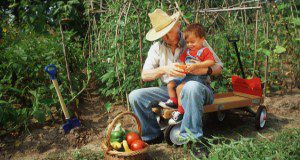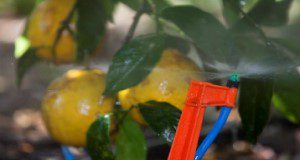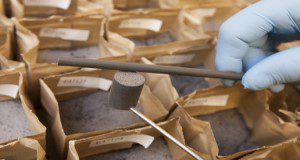Regardless of workspace or class setting, group work has gotten a reputation for being less than pleasant. However, when individuals have the opportunity to prepare for group work via understanding their personal strengths, expectations, and perspectives, the not-so-popular group work can often turn into pleasant, productive, and collaborative engagement. Because group dynamics shift and vary from group to group, there is a constant learning opportunity to understand how to work in groups successfully. This new 2-page publication of the UF/IFAS Department of Agricultural Education and Communication will identify simple yet effective strategies that can serve as foundational building blocks whenever preparing oneself or others for group work. Written by Cecilia E. Suarez and Jarred A. Shellhouse.
https://edis.ifas.ufl.edu/wc389
Author: Paul Roberts
Microsoft Teams for CEU and Training Delivery
The Microsoft Teams collaboration platform is popular among UF/IFAS faculty, researchers, Extension agents, and staff for its ease of use and utility for internal and external communication, collaboration, and meetings. The Teams webinar feature called live events can be used for a more controlled experience for large meetings, events, or CEU delivery. This new 5-page article will discuss the benefits and possible limitations of this service, specifically for offering online CEU material that meets Florida Department of Agriculture and Consumer Services (FDACS) guidelines for such trainings. Written by Brett W. Bultemeier and Joe Gasper and published by the UF/IFAS Pesticide Information Office.
https://edis.ifas.ufl.edu/pi290
Optimizing Irrigation and Young Tree Management
Young citrus trees require optimal irrigation management for vigorous vegetative growth, leaf flushing, and establishment of a dense canopy. Poor irrigation practices, such as infrequent irrigation or irrigating without using irrigation scheduling tools, could be costly. Besides excessive loss of water and nutrients, the growth of young trees might be impacted by an excess or deficit of water. Crop water stress in young trees directly affects yield and fruit quality. This new 2-page publication of the UF/IFAS Department of Soil and Water Sciences, written by Davie Kadyampakeni and Sandra Guzmán, covers some strategies for optimizing young tree care and irrigation management to in turn optimize grove efficiency and productivity.
https://edis.ifas.ufl.edu/ss701
Quick Reference Guide to Postemergence Herbicides for Citrus Weed Control
This quick reference table will provide growers with information (suggested rates, use restrictions, etc.) on different herbicides used in citrus. The herbicide table, prepared based on the Florida Citrus Production Guide, will aid growers to select an appropriate postemergent herbicide program in citrus groves. Written by Ramdas Kanissery, Camille E. McAvoy, Jamie D. Burrow, Stephen H. Futch, Brent A. Sellers, and S. Shea Teems, and published by the UF/IFAS Horticultural Sciences Department.
https://edis.ifas.ufl.edu/hs1410
The Road to Recovery #5: Self-Assessment of Virtual Facilitation to Build Trust
This fifth publication in the Road to Recovery series discusses how Extension professionals can evaluate techniques to build trust when facilitating virtual programming. Specific recommendations are provided addressing concerns about short- and long-term virtual trust, inclusion techniques, Zoom fatigue, and cybersecurity. This new 5-page publication of the UF/IFAS Department of Agricultural Education and Communication was written by Colby Silvert, Cody Gusto, John Diaz, and Glenn Israel.
https://edis.ifas.ufl.edu/wc388
Crop Management Practices and Labor Inputs for Hop Production in Florida
The booming craft beer industry, rising prices of hops, and demand for locally-produced ingredients have recently increased interest in local hop production among growers and brewers. This article describes crop management practices and labor inputs required for small-scale hop production in Florida, with the aim of assisting growers with investment and farm management decisions. It is part of a larger series that will review the challenges of hop production in Florida, based on research experience at the UF/IFAS Gulf Coast Research and Education Center in Balm, FL. This new 6-page publication of the UF/IFAS Horticultural Sciences Department was written by Shinsuke Agehara, Mariel Gallardo, Aleyda Acosta-Rangel, Zhanao Deng, Jack Rechcigl, Tianyuan Luo, and Qi Qiu.
https://edis.ifas.ufl.edu/hs1409
The Road to Recovery #4: Evaluating Virtual Techniques to Reach Clientele and Promote Equity
This fourth publication in the Road to Recovery series explores the challenges Extension professionals may encounter in reaching clientele virtually during a pandemic. This new 4-page publication of the UF/IFAS Department of Agricultural Education and Communication discusses the concept of digital equity and provides recommendations to evaluate efforts to access and connect with key audiences. Written by Colby Silvert, Cody Gusto, John Diaz, and Glenn Israel.
https://edis.ifas.ufl.edu/wc387
Key Plant, Key Pests: Sycamore (Platanus spp.)
This series of Key Plant, Key Pests publications are designed for Florida gardeners, horticulturalists, and landscape professionals to help identify common pests associated with regional flora. This new 6-page publication of the UF/IFAS Environmental Horticulture Department helps identify the most common pests found on trees in the sycamore group, Platanus spp., and it provides information and general management recommendations for sycamore lace bug, bacterial leaf scorch, powdery mildew, anthracnose, and canker stain. Written by Matthew Borden, Kelly Laplante, Juanita Popenoe, Adam Dale, Caroline R. Warwick, and Brian Pearson.
https://edis.ifas.ufl.edu/ep601
The Road to Recovery #6: Evaluating Virtual Strategies to Build Community Capacity and Resilience
This sixth publication in the Road to Recovery series provides tips and strategies for Extension professionals interested in evaluating efforts to promote community capacity building and community resilience using virtual platforms. This new 5-page publication of the UF/IFAS Department of Agricultural Education and Communication was written by Cody Gusto, Colby Silvert, John Diaz, and Glenn Israel.
https://edis.ifas.ufl.edu/wc385
Utilizing Mindfulness as an Evening Reflection at Residential Camp
Utilizing mindfulness as an evening reflection at residential camps has been developed as a tool for use at the end of the day during residential camps, though language may be modified for use at the end of classes or day camps. The four lessons in this new 7-page publication of the UF/IFAS Florida 4-H Youth Development Program, written by Heather Janney, were developed as a way for youth to reflect on their activities throughout the day. It is recommended to do only one lesson 15-20 minutes per day.
https://edis.ifas.ufl.edu/4h412
Key Plant, Key Pests: Lilyturf (Liriope muscari)
This series of Key Plant, Key Pests publications is designed for Florida gardeners, horticulturalists, and landscape professionals to help identify common pests associated with common Florida flora. This new 4-page publication of the UF/IFAS Environmental Horticulture Department provides information and general management recommendations for leaf and crown rot, anthracnose, southern blight, scales, and root rot nematodes on lilyturf. Written by Juanita Popenoe, Caroline R. Warwick, and David J. Norman.
https://edis.ifas.ufl.edu/ep600
Construcción del Sistema de Tutorado para Lúpulo y su Establecimiento en Florida
El lúpulo (Humulus lupulus L.) es un ingrediente esencial en la elaboración de cerveza, que agrega amargura y sabor a la cerveza. Impulsada por el reciente movimiento de la cerveza artesanal, la producción de lúpulo se está expandiendo hacia estados no tradicionales en la producción de lúpulo. En Florida, aunque la producción comercial de lúpulo es casi inexistente, la cantidad de cervecerías artesanales aumentó de 45 en 2011 a 285 en 2018, y el impacto económico de la industria de la cerveza artesanal en Florida supera los $3 mil millones. Este nuevo artículo de 7 páginas, escrito por Shinsuke Agehara, Aleyda Acosta-Rangel, Zhanao Deng, Jack Rechcigl y Simon Bollin, traducido por Mariel Gallardo y publicado por el Horticultural Sciences Department de UF/IFAS, proporciona pautas y consideraciones para construir el sistema de tutorado para lúpulo y su establecimiento en Florida, utilizando como modelo, el campo de investigación del UF/IFAS Gulf Coast Research and Education Center (GCREC).
https://edis.ifas.ufl.edu/hs1408
Conducting the Needs Assessment #3: Educator Motivations, Barriers, and Objections
This third publication in the Conducting the Needs Assessment series outlines a range of motivations, barriers, and common objections Extension educators and other service providers may have pertaining to needs assessments. It is not an easy task to conduct a needs assessment, yet there are many motives for implementing one. This new 4-page publication of the Department of Agricultural Education and Communication discusses strategies for increasing educator motivation and removing barriers and objections to conducting a needs assessment. Written by Matt Benge.
https://edis.ifas.ufl.edu/wc386
Soil Arsenic in Miami-Dade County
This new 6-page factsheet provides information about soil arsenic (As) in Miami-Dade County, including basics, background concentrations, cleanup guidelines of soil As, and bioavailability of soil As related to plant and human health. Written by Yuncong Li, Ashley Smyth, Jonathan Crane, Christopher Teaf, and Guangliang Liu, and published by the UF/IFAS Department of Soil and Water Sciences.
https://edis.ifas.ufl.edu/ss696
The Plant-Growth-Promoting Fungus, Mortierella elongata: Its Biology, Ecological Distribution, and Growth-Promoting Activities
Recent studies show that Mortierella elongata can perform plant-growth promotion across different types of crops, including bahiagrass, corn, tomato, squash, and watermelon. Compared to the well-known species that have plant-growth-promotion abilities (e.g., mycorrhizal fungi, Trichoderma), growers, agents, and stakeholders are not familiar with “Mortierella” despite the important role these fungal taxa play in promoting the growth of their crops. This new 5-page publication of the UF/IFAS Department of Soil and Water Sciences provides a brief overview of Mortierella from biological, taxonomical, ecological, and functional perspectives to help readers learn the biology and potential modes of action of this fungus. Written by Hui-Ling Liao.
https://edis.ifas.ufl.edu/ss679
Leading Difficult Conversations Series #3: Creating a Safe Conversation Environment
This publication series is intended for leaders who bear the responsibility of having difficult conversations as part of their professional responsibilities. Earlier in this publication series, the foundational principles of preparing for difficult conversations were established: (1) defining the issue and (2) determining your motive for the conversation. Once those principles are put into practice, the next phase of having a difficult conversation is creating a safe environment for the conversation. Components of creating a safe environment include recognizing a conversation’s content and conditions, understanding the threats to a safe environment, and utilizing skills to overcome threats to restore safety. This new 3-page publication of the UF/IFAS Department of Agricultural Education and Communication was written by Christy Chiarelli.
https://edis.ifas.ufl.edu/wc384
An Introduction to Utilizing Community Leaders to Expand Resiliency Efforts Following a Disaster
In the southeastern United States, many agricultural, vulnerable, and rural communities (AVRCs) must cope with natural disasters regularly. These natural disasters not only harm communities, crops, and livelihoods, but also can negatively impact the mental health of affected individuals, including those living in AVRCs. The purposes of this new 3-page article are to (1) provide tips on identifying specific individuals who could qualify as community leaders and (2) provide details on how partnering with community leaders can be beneficial for mental health communication and outreach. Written by Lisa Lundy, Jacqueline Aenlle, Ricky Telg, Tracy Irani, Angie Lindsey, Ashley Mcleod-Morin, Michaela Kandzer, and Phillip Stokes, and published by the UF/IFAS Department of Agricultural Education and Communication.
https://edis.ifas.ufl.edu/wc383
Nutrition and Irrigation Management for Florida HLB-Affected Trees
To improve production of huanglongbing (HLB) affected trees, nutrition, irrigation, and soil pH should be considered together, because each can influence the efficacy of the others in overcoming the effects of HLB on tree performance. This two-sided poster published by the UF/IFAS Horticultural Sciences Department through the UF/IFAS Citrus Research and Education Center was written by Tripti Vashisth, Davie Kadyampakeni, and Jamie D. Burrow.
https://edis.ifas.ufl.edu/hs1367
Leches a base de plantas: Soya
La leche de soja es una leche vegetal elaborada a partir de semillas de soja (Glicine max). A diferencia de algunas de las leches de origen vegetal que se comercializan recientemente, la leche de soja tiene una larga historia como bebida en todo el mundo y se comercializa en los Estados Unidos durante más de un siglo. Si se ha preguntado cómo se compara con la leche de vaca, esta publicación describe los ingredientes y el contenido de nutrientes de la leche de soja producida comercialmente y sus posibles beneficios y riesgos para la salud.
This new 6-page publication of the UF/IFAS Food Science and Human Nutrition Department is the Spanish translation of FSHN20-54/FS422, Plant-Based Milks: Soy, written by Jessica Goldberg, Daniela Rivero-Mendoza, and Wendy J. Dahl.
https://edis.ifas.ufl.edu/fs430
Soil-Test-Based Phosphorus Recommendations for Commercial Agricultural Production in Florida
This new 6-page publication of the UF/IFAS Department of Soil and Water Sciences is intended to address agronomic and environmental issues related to phosphorus (P) dynamics in Florida agricultural soils and soil test P interpretation and management for agricultural crops. This document aims to provide science-based information to agricultural clientele, including commercial producers, small farmers, Extension agents, crop consultants, landscape professionals, representatives of the fertilizer industry, state and local agencies, students and instructors of high schools and colleges, researchers, and interested Florida citizens. Written by Rao Mylavarapu, Yuncong Li, Maria Silveira, Cheryl Mackowiak, and Mabry McCray.
https://edis.ifas.ufl.edu/ss699

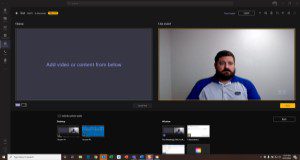
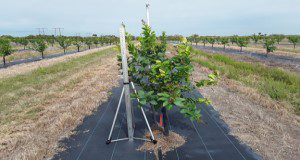
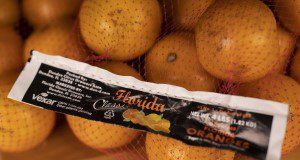
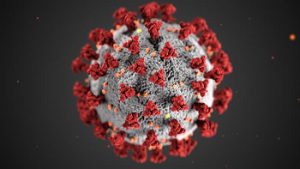

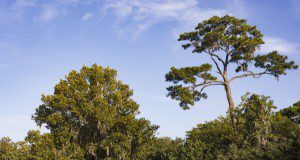
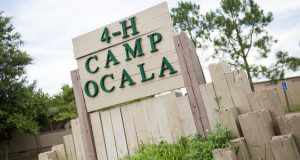
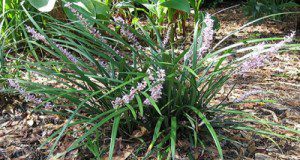



![Growth enhancement of loblolly pine (<i>Pinus taeda</i>) in response to inoculation of <i>M. elongata</i> (Isolate PMI93). After inoculation, seedlings of <i>P. taeda</i> were grown in sterile sand or natural soil systems (30% soil collected from <i>P. taeda</i> forest, Durham, NC, mixed with 70% sterile sand [w/w]) for 10 months. Credits: Hui-Ling Liao, UF/IFAS](https://edis-news.ifas.ufl.edu/wp-content/uploads/2021/03/ss679-300x160.jpg)

